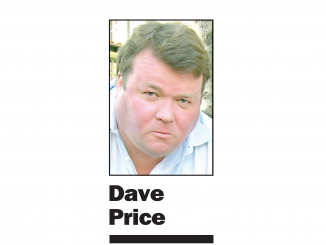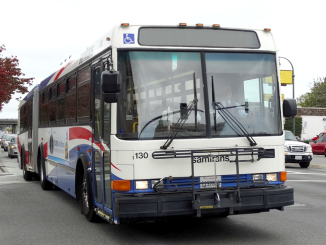
BY EMILY MIBACH
Daily Post Staff Writer
Opponents of Measure W, the half-cent SamTrans sales tax, agreed yesterday (Dec. 6) that none of the damaged ballots duplicated by the county’s elections office were copied incorrectly, but now they’re offering different reasons why they lost.
Last week when the last few hundred ballots were being counted by the elections office, the measure went from losing to winning.
It needed two-thirds or 66.7% to pass. It jumped in the final days of the vote counting from 66.55% to 66.85%, just squeaking by the threshold for passage.
The spike in “yes” votes prompted the opponents of Measure W— county Republicans and members of the local Sierra Club — to begin to look into what happened.
One opponent of the measure, Gladwyn D’Souza, conservation chair for the Loma Prieta chapter of the Sierra Club, noted that the percentage of “yes” votes spiked after the elections office counted damaged ballots.
Damaged ballots might have a stray mark on them, or the paper may have been ripped. When that happens, county employees transcribe the votes on the damaged ballot to a clean ballot, which is then fed into a scanner for tallying. Because Measure W opponents were so concerned about the possibility that the damaged ballots were transcribed wrong, Elections Official Mark Church decided that his office would do an audit of 1% of the 1,200 damaged ballots that were counted.
That audit was scheduled for yesterday (Dec. 6). While the audit went forward, it was not without drama. Winners object to audit Attorney Jim Sutton, who is representing the Yes on Measure W side, showed up at 40 Tower Road, where the audit was scheduled to begin, and objected.
Sutton, a San Francisco attorney with a speciality in election law, told the Post that while the “yes” side had “full faith” that Church’s office correctly copied the ballots, they wanted to “go on record” and object to the audit.
“Under the law the only way that one side has the right to ask for documents and for them to be re-re-viewed is through a recount that they pay for,” Sutton said. “It’s shocking that they had four supervisors and 12 employees working for eight or nine hours on this all because the losing side kind of brow beat them into doing so.”
Sutton said he knew from his work with the county’s election office in the past that Church’s employees are some of the most careful elections workers in the area, but were shocked that the office was corralled into the audit.
“I felt like we had to go on record to object because this was extraordinary and was only authorized because they were browbeat into doing do,” Sutton said.
Election workers checked 100 ballots, and every one of them was transcribed correctly.
David Schonbrunn, a San Rafael resident who runs Transdef, an environmental group that has come out against past tax measures that would fund transportation, said he felt that the Yes on W’s inference was a case of being “sore winners.”
“The fact that they tried to shut down the process says things about the kind of transparency they welcome here,” Schonbrunn said.
He also said he was pleased with the lack of errors found during the audit.
“If there was any wrongdoing, it was not in the walls of Tower Road,” said county Republican Tom Weissmiller, referring to the elections division.
Schonbrunn agreed, saying that at the time of the results change, the group was not aware of the impacts of so-called “ballot harvesting” and same-day voter registration.
Ballot harvesting, where people go around and collect and turn in voters’ ballots for them, along with voters registered on Election Day, have possibly resulted in the shift in results in multiple races up and down the state where it initially looked like the more conservative candidate or option was winning, and instead the more progressive options won.



